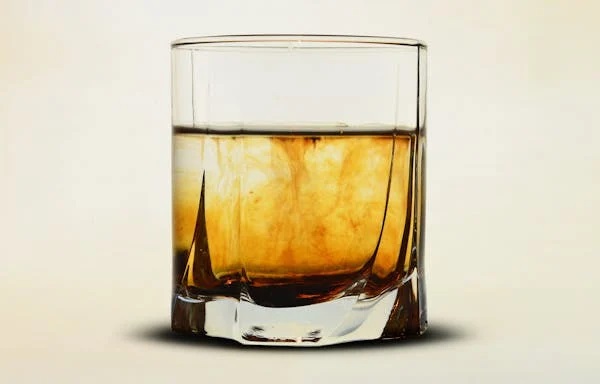Welcome to the enlightening journey of understanding the caloric content of whiskey, a topic that resonates with connoisseurs and casual drinkers alike. Whiskey, with its rich history and intricate distillation process, has long captivated the hearts of many. Yet, amidst the appreciation for its robust flavors and the cultural rituals surrounding its consumption, there arises a pragmatic question that concerns health-conscious individuals: “How many calories in whiskey?” This inquiry not only reflects a growing awareness towards mindful drinking but also underscores the importance of balancing indulgence with nutritional wisdom.
Our exploration delves deep into the essence of whiskey, unraveling the factors that influence its caloric value—from the impact of alcohol proof to the significance of aging processes and the hidden calories in popular mixers. With a foundation built on scientific research and expert insights, this article demystifies the caloric content of whiskey, offering readers a comprehensive understanding that bridges the gap between pleasure and health.
Contents
- 1 How Many Calories In Whiskey?
- 2 The Science of Calculating Calories in Whiskey
- 3 Flavored Whiskeys and Calorie Considerations
- 4 Serving Styles
- 5 Nutritional Profile of Whiskey
- 6 Comparative Caloric Analysis with Other Spirits
- 7 Incorporating Whiskey into a Healthy Lifestyle
- 8 Conclusion: How Many Calories In Whiskey?
How Many Calories In Whiskey?
The calorie content in whiskey varies depending on factors like proof and serving size. Generally, a standard shot of whiskey (1.5 oz) contains around 96-97 calories for 80 proof whiskey and 116 calories for 94 proof whiskey. The caloric content may vary slightly based on the brand and proof of the whiskey. Whiskey is considered a lower-calorie option compared to other alcoholic beverages due to its distillation process, which eliminates sugars and carbs. It’s essential to be mindful of portion sizes and mixers when consuming whiskey to manage calorie intake effectively.
The Science of Calculating Calories in Whiskey
The United States Department of Agriculture (USDA) has a standard method for determining the calories in alcoholic beverages. Because alcohol contains 7 calories per gram, the calories can be easily computed based on the volume and alcohol percentage. Here is the formula:
- Calories = (volume in ounces) x (alcohol % / 100) x 7
See more : How Many Shots Of Vodka To Get Drunk? Avoid Overdoing It
So for a 1.5 ounce shot of 80 proof (40% alcohol) whiskey:
- Calories = 1.5 x (40/100) x 7 = 84 calories
For a 1.5 ounce shot of 100 proof (50% alcohol) whiskey:
- Calories = 1.5 x (50/100) x 7 = 105 calories
As you can see, higher alcohol proofs dramatically increase the calorie counts. But even at 100 proof, whiskey remains a relatively low-calorie spirit option.
Flavored Whiskeys and Calorie Considerations

Many popular whiskey variants like honey, cinnamon, apple, and maple flavors add extra calories on top of the distilled spirit’s baseline amount. The sugars and flavoring agents contribute additional calories, which should be accounted for. Check the nutrition labels of flavored whiskeys to get the full caloric profile. In general, enjoy these sweet whiskeys in moderation and balance them out with calorie-free mixers like soda water.
Serving Styles
When it comes to pure, unflavored whiskey, there are two primary serving styles: on the rocks and neat. Enjoying whiskey “neat” means having it at room temperature without any ice dilution. This provides the full intensity of the whiskey’s flavors and aromas. While delicious, extended neat drinking can increase overall calories consumed. For the ultimate whiskey experience with less caloric impact, consider whiskey “on the rocks” – served over ice cubes. The chilled temperature and gradual dilution opens up the whiskey’s complexities. Plus, the melting ice slows consumption, allowing you to savor the whiskey and resulting in lower caloric intake.
Nutritional Profile of Whiskey

See more : How Many White Claws To Get Drunk? Get the Party Right
Beyond calories, whiskey has minimal nutritional value. Pure distilled whiskey only contains traces of substances from the grains, barely registering any protein, carbohydrates, fiber, fat, vitamins or minerals. Whiskey gets nearly all its calories directly from the alcohol itself. Any nutritional benefits would be from flavored additives like honey, which contains small amounts of nutrients like potassium, calcium and vitamin C. Overall, whiskey alone should not be considered a significant source of nutrition.
Comparative Caloric Analysis with Other Spirits
How does whiskey stack up calorie-wise against other alcoholic beverage options? Here is a quick comparison per typical serving:
- Whiskey (1.5oz): 105 calories
- Vodka (1.5oz): 100 calories
- Gin (1.5oz): 115 calories
- Rum (1.5oz): 105 calories
- Tequila (1.5oz): 105 calories
- Light beer (12oz): 100 calories
- Red wine (5oz): 125 calories
- White wine (5oz): 120 calories
As shown above, whiskey is very comparable calorie-wise to other popular spirits. Vodka contains slightly less calories, while gin has slightly more. Overall whiskey fits well into a balanced diet and active lifestyle. Moderation is key with any alcohol choice.
Incorporating Whiskey into a Healthy Lifestyle
Here are some tips for enjoying whiskey reasonably as part of a healthy, balanced diet:
- Stick to standard serving sizes of 1.5oz whiskey shots.
- Alternate with calorie-free mixers like soda water or ice.
- Be cautious with additional sugars from flavored whiskeys.
- Sip slowly to savor the flavors and avoid overconsumption.
- Hydrate with water between whiskey drinks.
- Eat nutritious meals before and after drinking.
- Account for whiskey calories in your daily caloric goals.
Whiskey can absolutely be pleasurably included in an active lifestyle. Just be sure to indulge responsibly and in moderation. Add physical activity to burn extra alcohol calories. Prioritize nutrition, hydration, rest, and wellness.
Conclusion: How Many Calories In Whiskey?
In summary, sipping whiskey does not have to sabotage health goals when consumed conscientiously. Pure whiskey contains minimal carbs, sugar, and nutrients – only deriving calories from alcohol. Proof, distillation method, flavorings, and serving style impact calorie counts. But a 1.5 ounce serving generally provides 100-105 calories. Moderation, hydration, and balancing whiskey with nutritious eating and exercise allows you to enjoy your whiskey and remain healthy. Savor your whiskey, but do so with mindfulness and in moderation as part of an active, balanced lifestyle.

Michael J. Fanola is the chef and owner of Joe’s French Italian Inn Restaurants. He has over 30 years of culinary experience, and his restaurants have been voted “Best Italian Restaurant” by the readers of the Staten Island Advance for many years in a row. Michael is a graduate of the prestigious Culinary Institute of America, and he has worked in some of the most highly acclaimed kitchens in the country.




